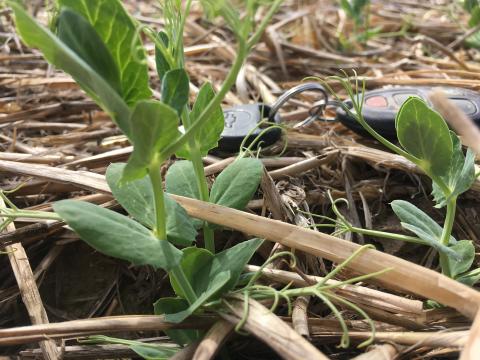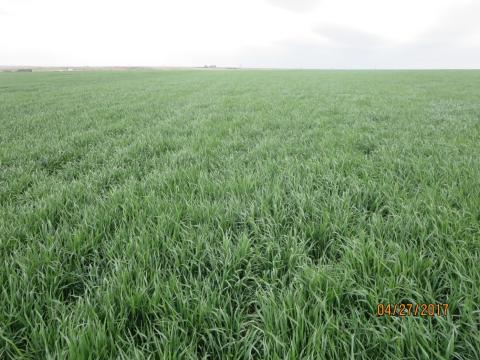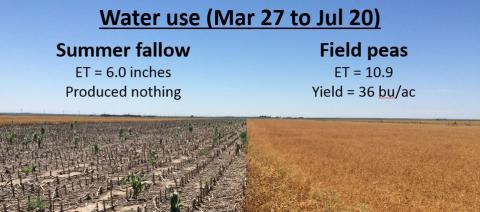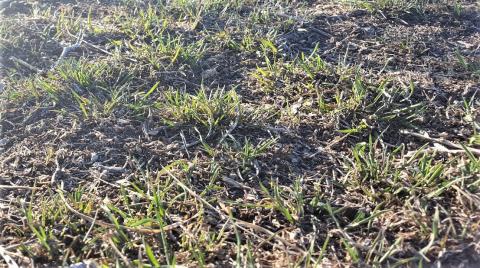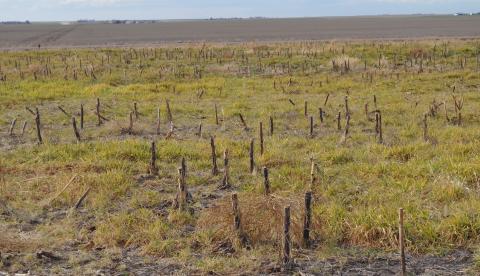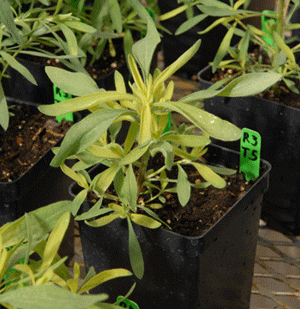Field Pea Field Days Scheduled for June at 5 Locations across Nebraska
May 24, 2017
Field day participants will be able to view field pea varieties and learn about rotational benefits and agronomic practices to profitably grow field peas and integrate them with existing cropping systems.
Yellow Field Peas Fare Well After Recent Lows
May 4, 2017
Most yellow field pea being grown in western Nebraska were at early vegetative stages (4th to 7th node or 1-5 leaf stages) during last week’s cold snap, but extensive damage is not expected due to the pea’s level of frost tolerance.Field pea tolerance to frost during early stages of vegetative growth is partially due to the “hypogeal” germination nature of the crop. For plant species with hypogeal germination (e.g., field pea, lentil, chickpea), shoot germination occurs belowground.
Assessing Freeze Injury to Wheat
April 27, 2017
As temperatures dropped below 28° F at a number of sites this week, the authors address how to assess whether freeze damage has occurred.
Field Pea Seeding Rates, Seeding Depth, and Inoculant
March 13, 2017
Grain-type field peas are a cool season grain crop grown as an alternative for no-till summer fallow in a semiarid cereal-based cropping systems such as wheat-corn-fallow and/or wheat-fallow. They are typically planted in mid-March and harvested late-July. This article reports on research conducted on seeding practices and offers recommendations for producers on the economically optimal seeding rate, seeding depth, and inoculant to grow field peas in western Nebraska.
Field Pea Production: Rotational Costs and Benefits
March 10, 2017
Research findings show benefits in soil nutrient cycling, water infiltration, and microbial activity from replacing fallow with grain-type field peas in a wheat-fallow rotation in western Nebraska.
Take Advantage of Warm Weather this Winter to Control Downy Brome
February 20, 2017
Just a month after double-digit below zero temperatures, Nebraska hit an extended period of above normal temperatures, coaxing weed seeds to germinate early in many fields and pastures and creating the need to tackle the influx early.
Growers Urged to Keep a Watchful Eye for Wheat Viruses This Spring
January 25, 2017
While the mild fall promoted wheat establishment, it also favored survival of wheat curl mites, the leading vector of several viruses common to Nebraska wheat. While much of the state's wheat crop entered winter in very good condition, growers are urged to scout for viruses this spring and assess yield potential of individual fields when making management decisions.
Managing Glyphosate- and ALS-Resistant Kochia in the Panhandle
December 15, 2016
The development and management of pesticide-resistant kochia in dryland and irrigated systems in the Panhandle including a table of herbicide options for Nebraska.



